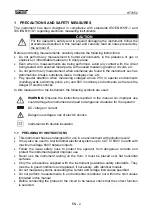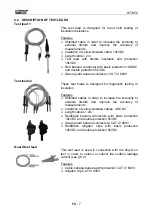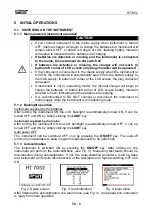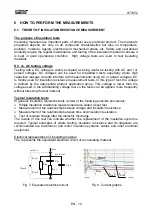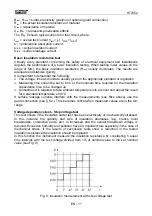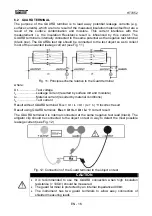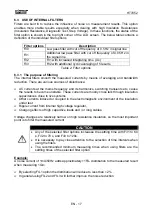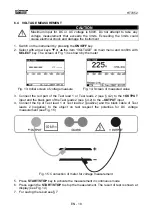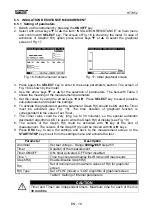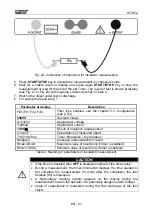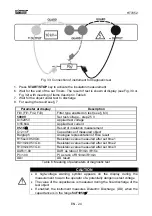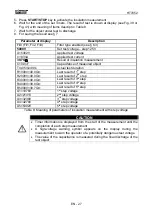
HT7052
EN - 16
6.2 GUARD
TERMINAL
The purpose of the GUARD terminal is to lead away potential leakage currents (e.g.
surface currents), which are not a result of the measured insulation material itself but are a
result of the surface contamination and moisture. This current interferes with the
measurement i.e. the Insulation Resistance result is influenced by this current. The
GUARD terminal is internally connected to the same potential as the negative test terminal
(black one). The GUARDs test clip should be connected to the test object so as to collect
most of the unwanted leakage current (see Fig. 11)
Fig. 11: Principle scheme relative to the Guard terminal
where:
Ut ..................... Test voltage
I
L
...................... Leakage current (resulted by surface dirt and moisture)
I
M
...................... Material current (resulted by material conditions)
I
A
...................... Test current
Result without GUARD terminal: R
INS
= Ut / I
A
= Ut / (I
M
+ I
L
)
Incorrect result
Result using GUARD terminal:
R
INS
= Ut / I
A
= Ut / I
M
correct result
The GUARD terminal it is internal connected at the same negative test lead (black). The
alligator clip should be connected to the object on test in way to detect the most possible
leakege current (see Fig. 12)
Fig. 12: Connection of the Guard terminal to the object on test
CAUTION
It is recommended to use the GUARD connection when high insulation
resistance (> 10G
) should be measured
The guard terminal is protected by an internal impedance 400k
The instrument has two guard terminals to allow easy connection of
shielded measuring leads

